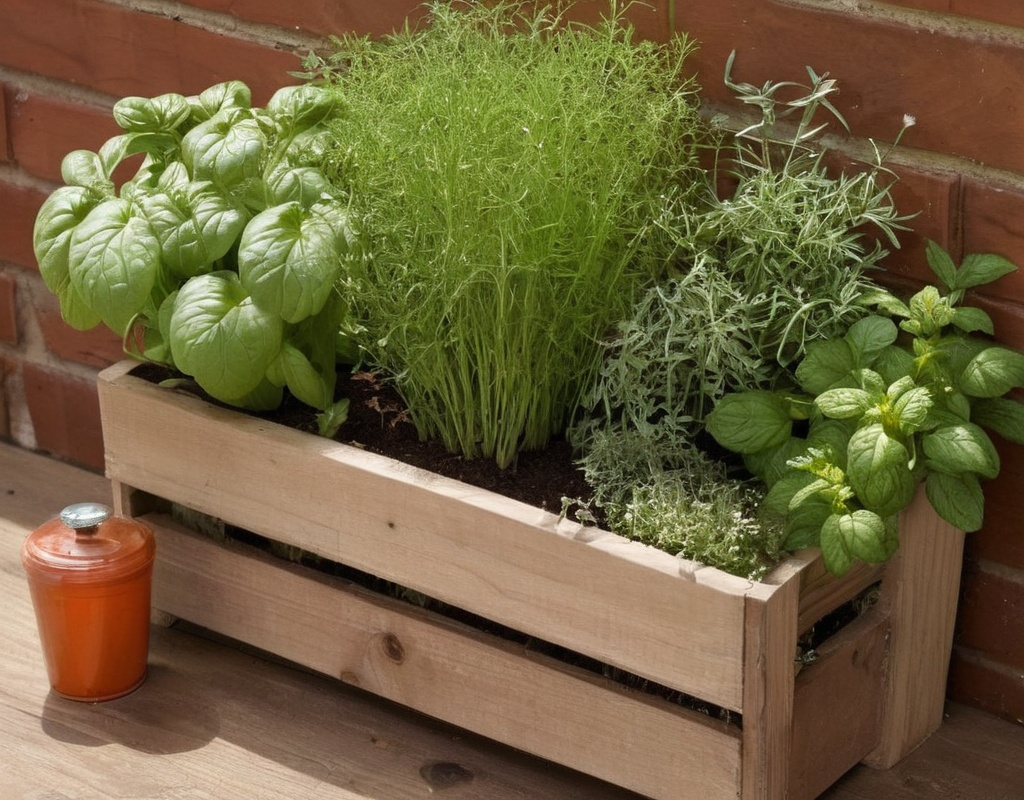Growing your own herbs at home is not just a smart choice, it’s also super rewarding. Imagine stepping into your kitchen and grabbing fresh basil, mint, or thyme straight from your countertop or windowsill. No more running to the store for that one ingredient you forgot. Plus, it just makes everything taste better, right? Let’s dive into 20+ amazing herb garden ideas for your home and kitchen that will not only look beautiful but also give you access to fresh herbs all year round.
1. Windowsill Herb Garden
A bright, sunny windowsill is all you need to start your own herb garden. Forget elaborate setups or designer pots—just use simple containers filled with potting soil to plant herbs like basil, parsley, and cilantro. This compact setup keeps fresh herbs conveniently within reach, making your windowsill feel like a personal green corner.

2. Hanging Herb Garden
Short on counter space? Elevate your herbs—literally. Suspend small pots or mason jars from a wall or beneath kitchen cabinets. Hardy herbs such as rosemary and thyme flourish in these hanging displays. Not only is it practical, but it also adds visual charm and becomes a great talking point for visitors.
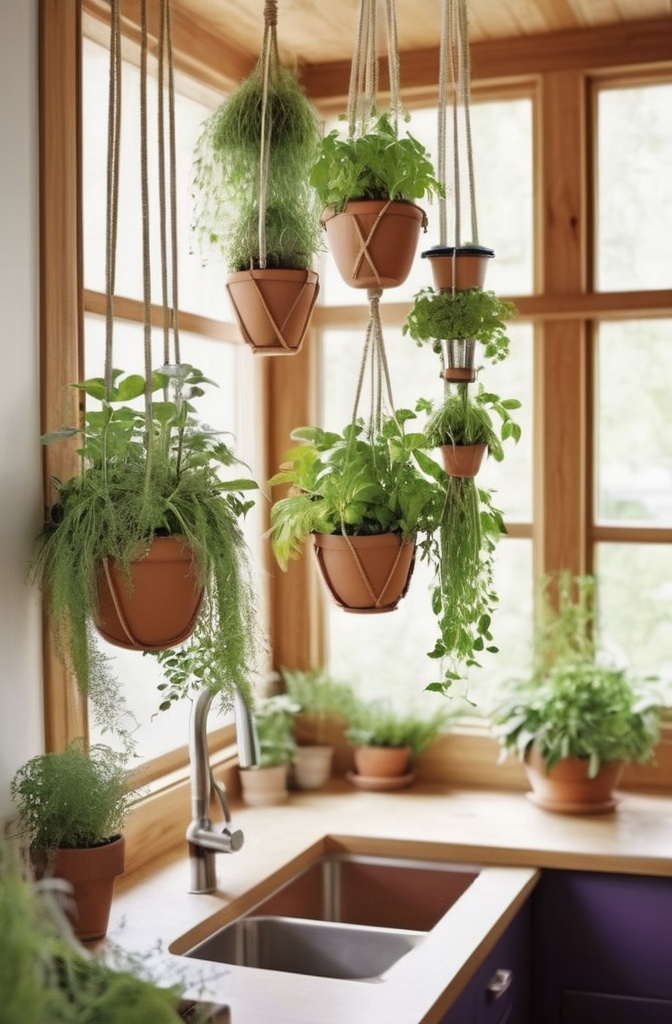
3. Vertical Tower Herb Garden
Looking to grow more while using less space? A vertical tower garden is an efficient, modern solution. These tiered structures can accommodate multiple herb varieties, and their compact footprint makes them ideal for small areas. They also make an eye-catching statement with their green, layered aesthetic.
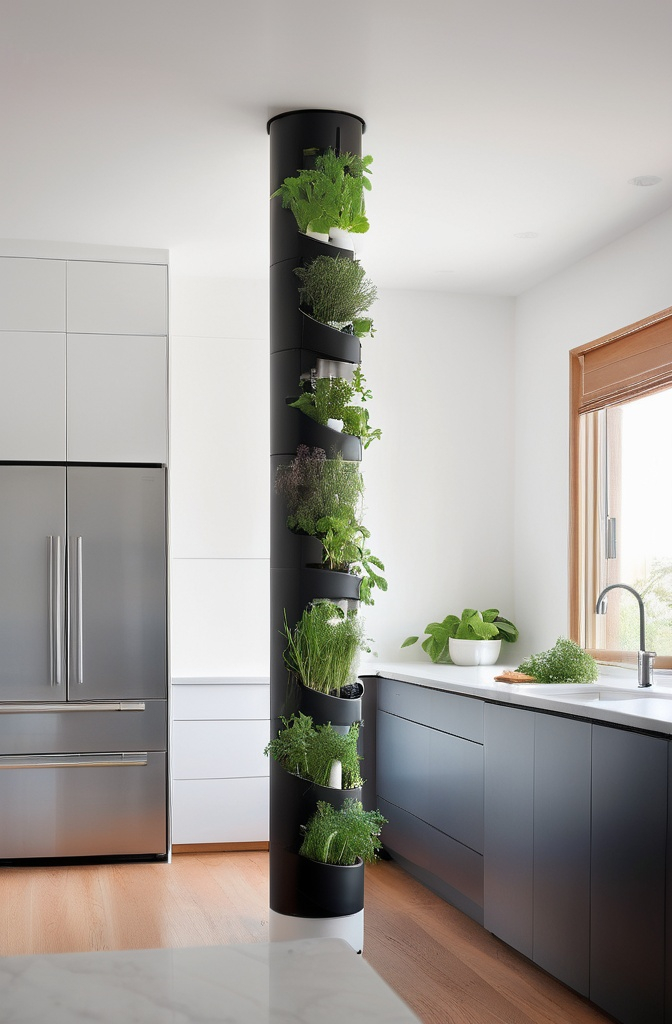
4. Countertop Herb Planter
Indoor gardening doesn’t get simpler than this. A compact countertop planter allows you to grow herbs like basil and chives right in your kitchen. Select a stylish container, add soil, and start planting. It’s a convenient and attractive way to bring freshness into your cooking space.
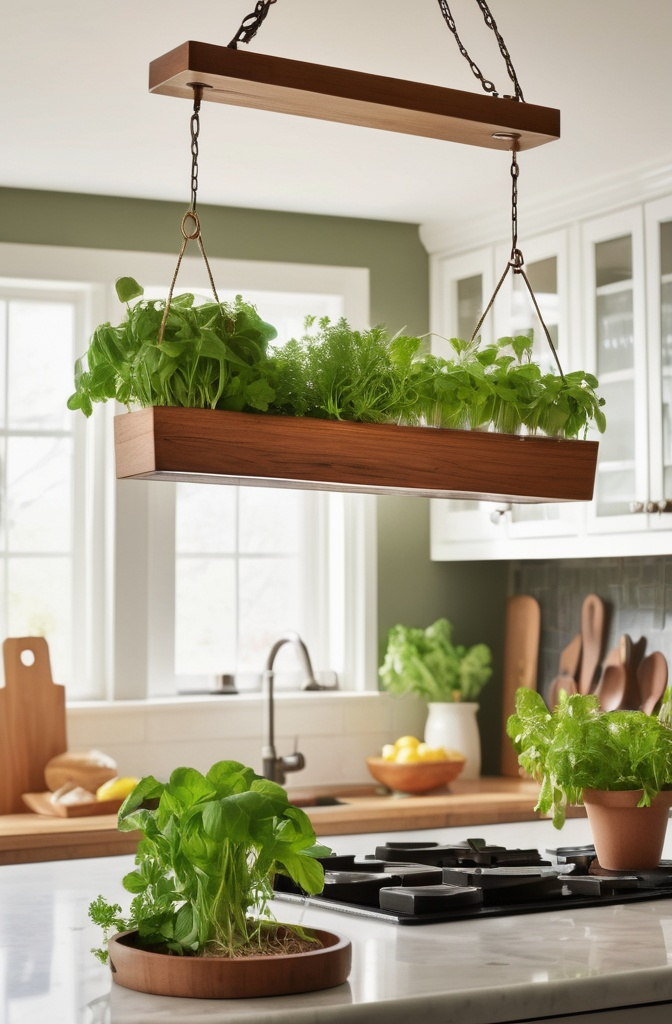
5. Repurposed Pallet Herb Garden
Inject rustic flair into your kitchen with a DIY pallet garden. Salvaged wooden pallets make charming vertical planters—ideal for herbs such as mint, oregano, and thyme. This eco-conscious option not only reduces waste but also introduces a warm, farmhouse appeal to your decor.
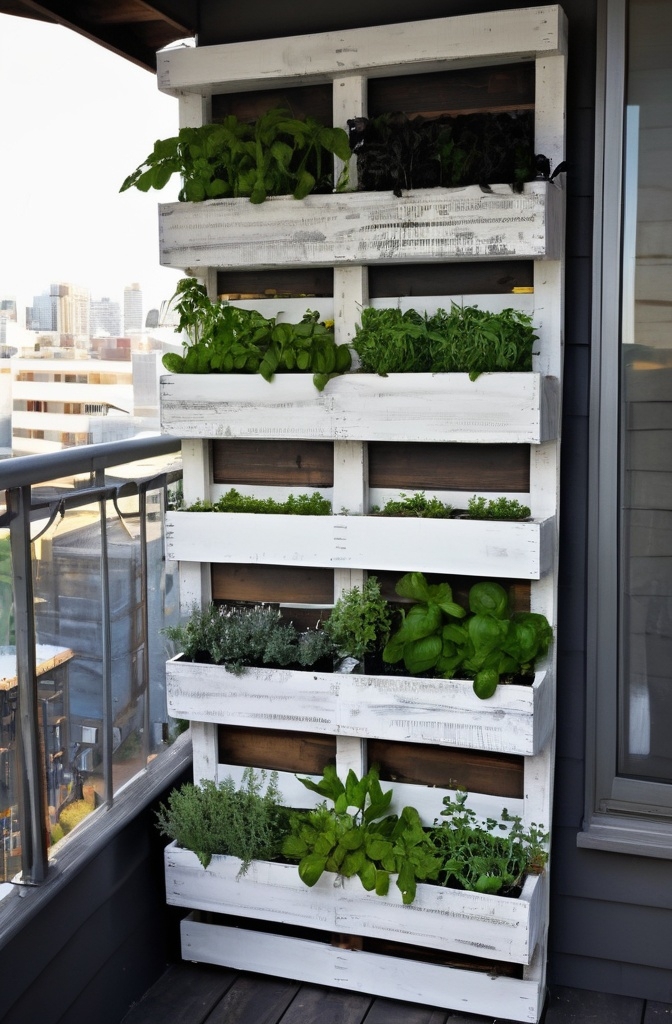
6. Herb Garden on a Kitchen Ladder
Turn an old ladder into a unique and functional herb display. Lean it against a kitchen wall and attach pots to each rung for a cascading greenery effect. It’s both a space-saver and a stylish nod to vintage design, perfect for adding personality to your indoor garden.
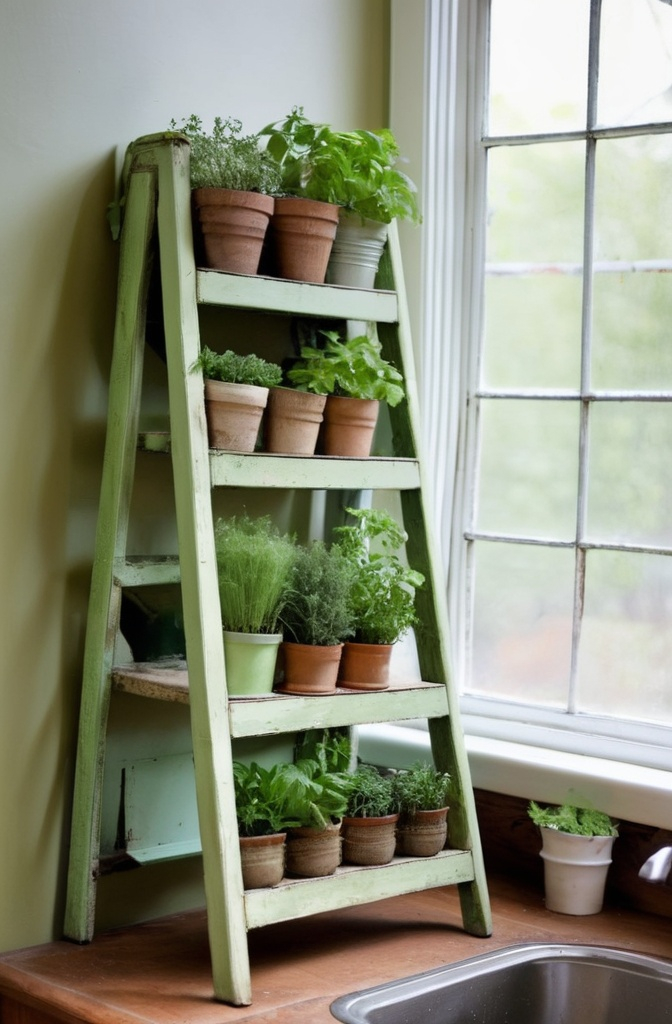
7. Kitchen Shelf Herb Garden
Put your kitchen shelves to creative use by lining them with herb-filled containers. Glass jars, ceramic pots, or even whimsical mugs work beautifully. This approach allows for artistic expression while ensuring you have fresh herbs close at hand for every culinary adventure.
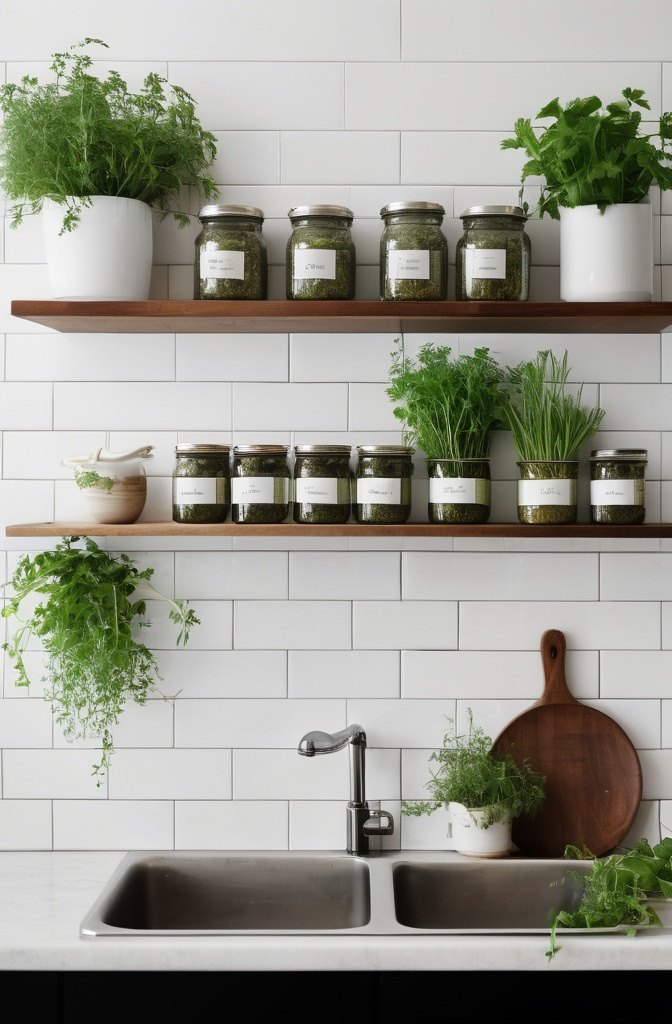
8. Mason Jar Herb Garden
Mason jars offer a versatile and charming solution for small-space herb gardening. Fill each one with soil and a different herb—like mint, basil, or rosemary—and line them along a windowsill or shelf. Their vintage vibe adds charm while serving a practical purpose.
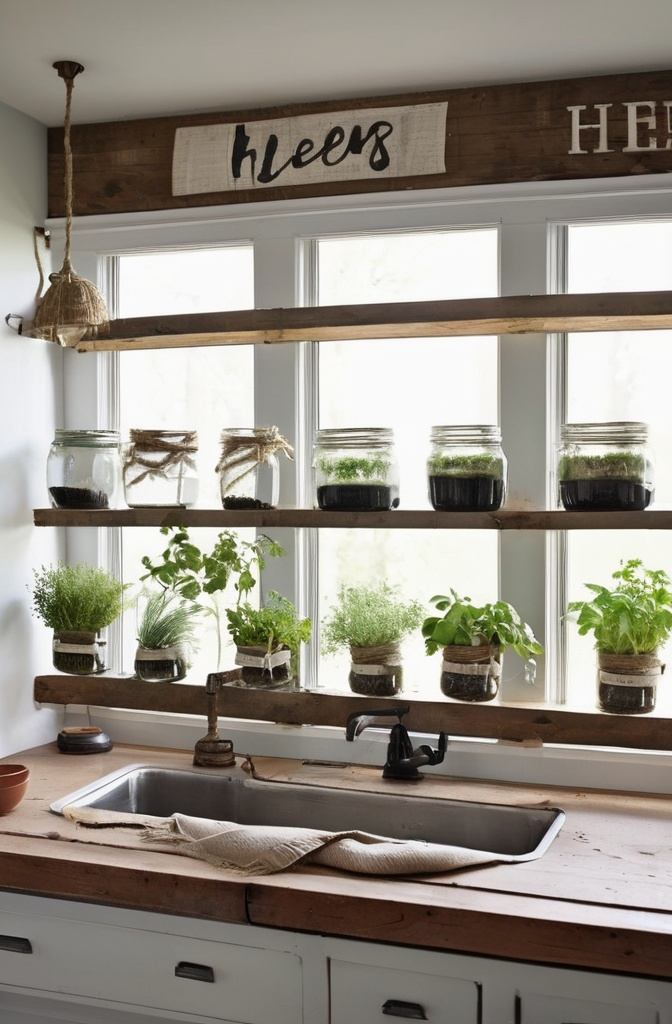
9. Aquaponic Herb Garden
Combine sustainability with innovation in an aquaponic herb garden. This self-sustaining system uses nutrient-rich water from fish to nourish your plants. It’s low-maintenance, eco-friendly, and perfect for tech-savvy gardeners who want a modern twist on homegrown herbs.
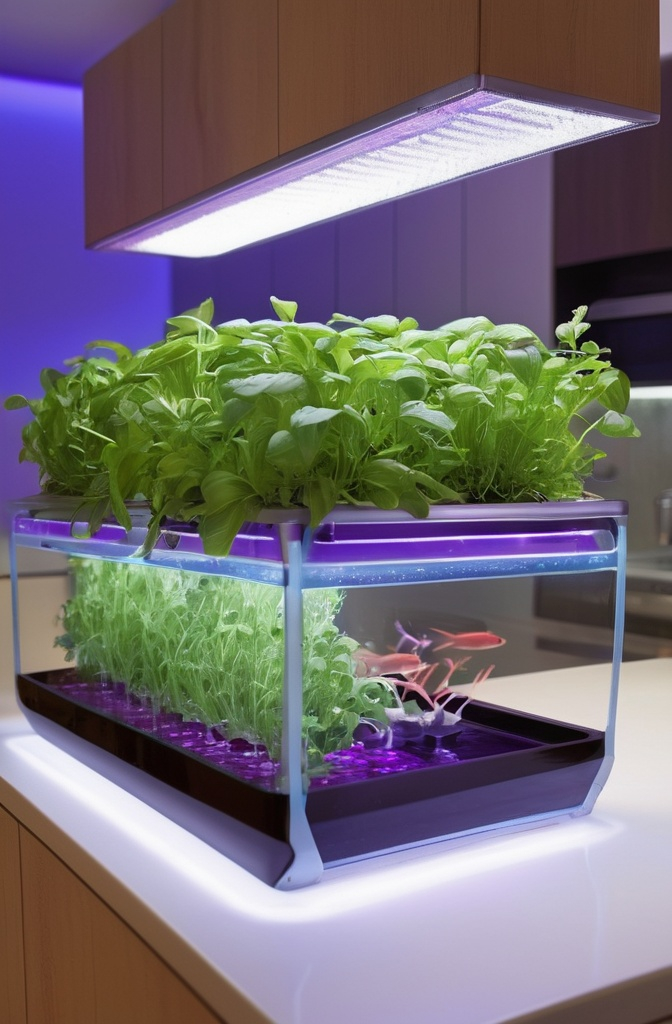
10. Herb Garden in a Repurposed Drawer
Give an old drawer a second life by transforming it into a rustic herb planter. Line it with plastic, add soil, and plant a variety of herbs inside. This creative solution adds a cozy, farmhouse element to your kitchen while keeping your garden portable and contained.

11. Topsy-Turvy Herb Garden
Create a whimsical garden setup with upside-down planters. Ideal for herbs like basil and thyme, this vertical approach saves space and offers a unique twist on traditional planting. It’s a conversation starter and a fun way to maximize light exposure.
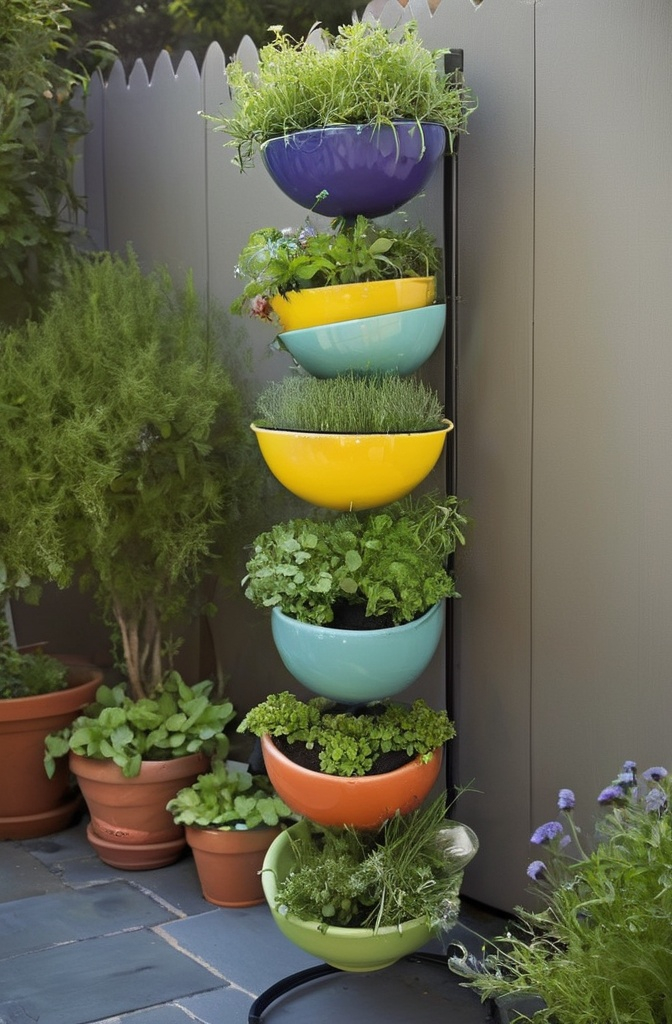
12. Herb Wall Garden
Use vertical space efficiently by installing a wall-mounted herb garden. Whether through fabric pockets or mounted containers, this living wall allows you to cultivate several herbs while creating a stunning green feature. Perfect for larger kitchens with unused wall real estate.
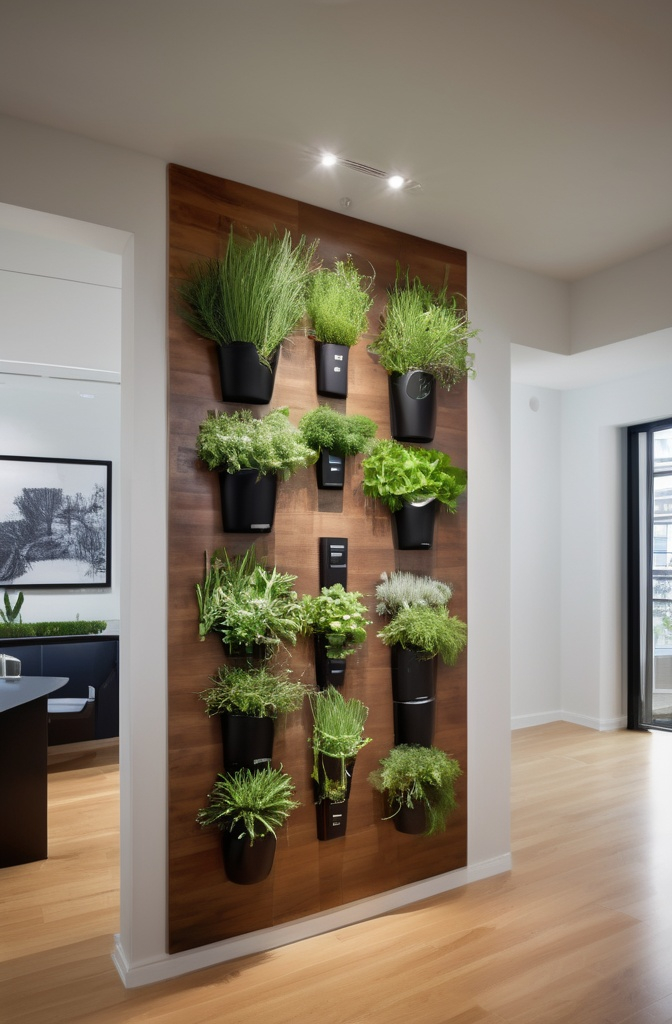
13. Hanging Basket Herb Garden
Much like decorative flower baskets, hanging herb baskets offer both beauty and function. Hang them near sunny windows or outside, and fill them with mint, oregano, or your favorite leafy greens. They bring life and aroma to any space—inside or out.
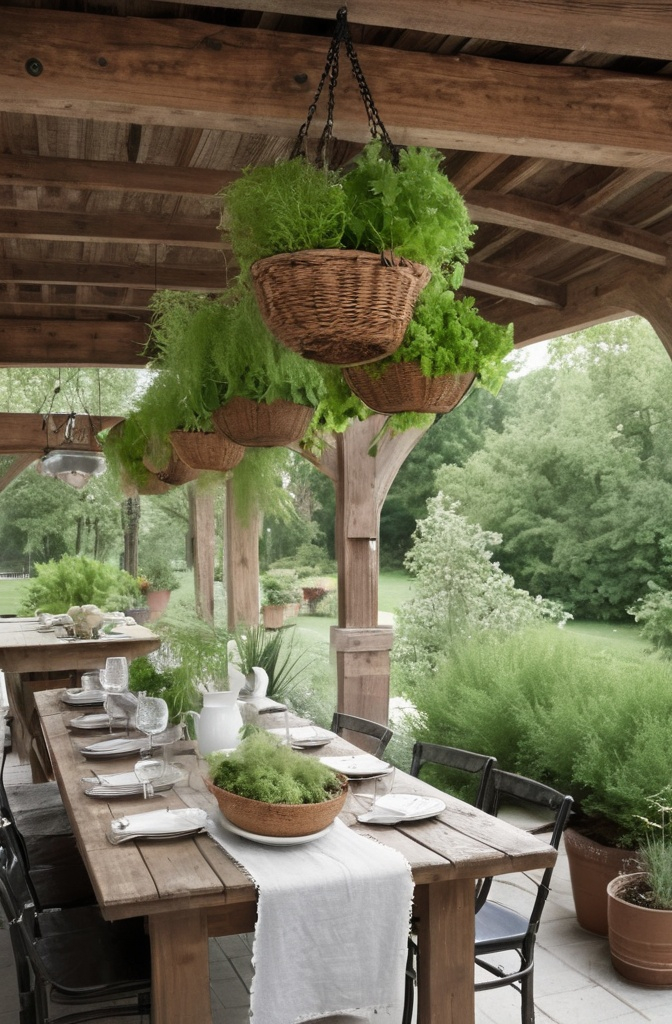
14. Herb Garden in an Old Toolbox
Transform an old toolbox into a rugged and charming herb planter. Each compartment is great for housing different herbs, offering natural separation and organization. This project not only reduces waste but also infuses your space with a touch of industrial flair.
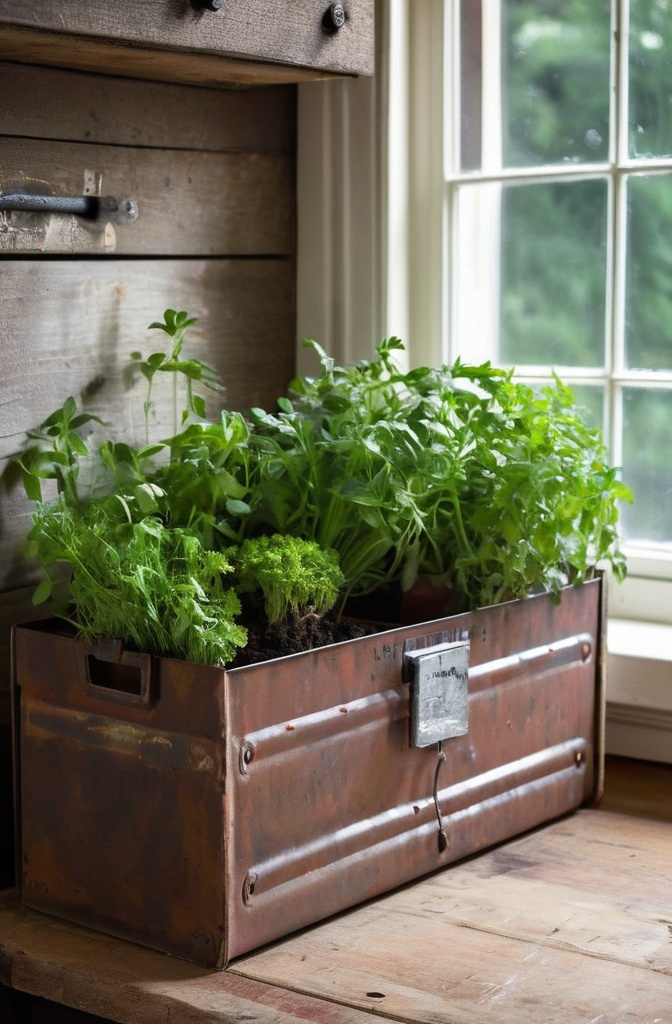
15. Herb Garden in a Wheelbarrow
Turn a weathered wheelbarrow into a mobile garden full of aromatic herbs. Roll it indoors or out depending on the season and sun availability. It’s ideal for growing varieties like thyme, basil, and rosemary, and adds a delightful rustic element to your space.
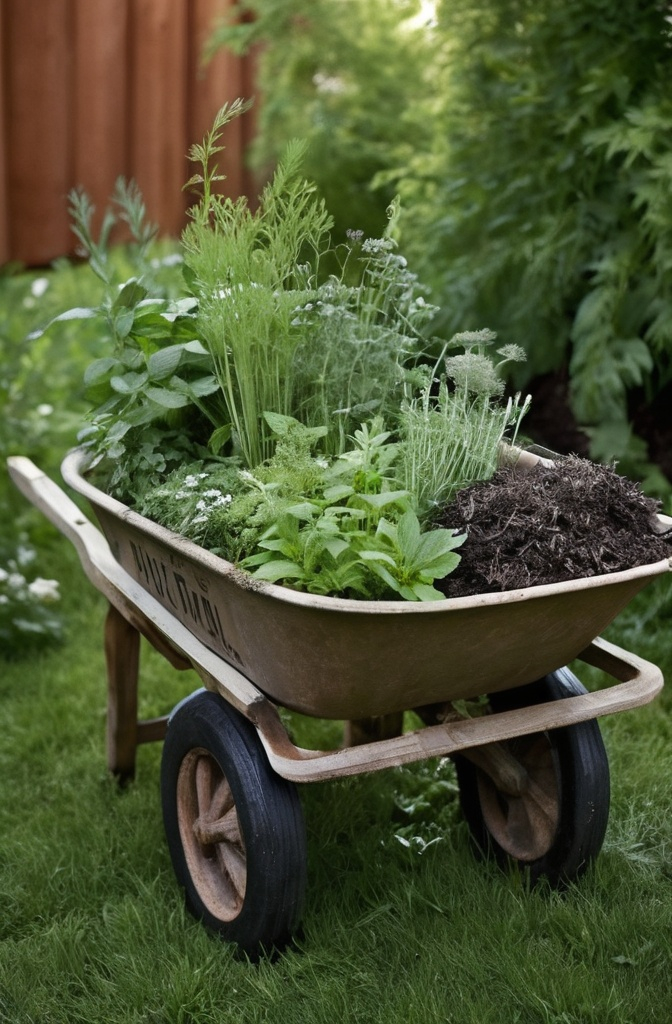
16. Herb Planter Box on the Kitchen Counter
A slim, rectangular planter box is all you need for a compact countertop herb garden. Perfect for growing chives, cilantro, or parsley, this setup ensures easy access during cooking and offers a splash of greenery to your kitchen aesthetic.
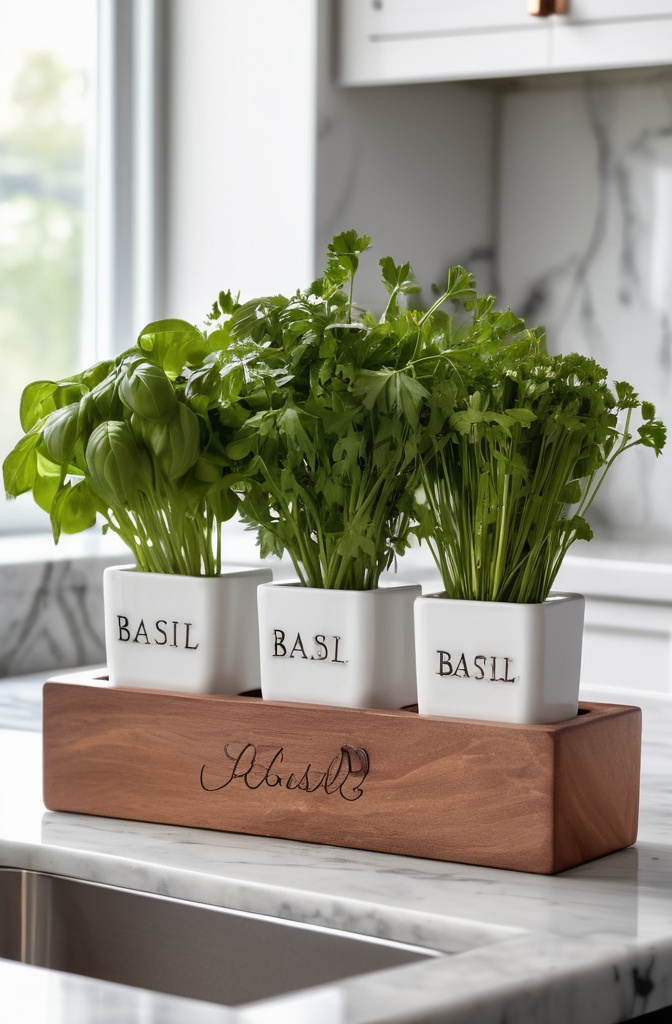
17. Outdoor Herb Garden
If you’re fortunate enough to have yard space, consider a dedicated outdoor herb bed or raised planter box. With more room to grow, you can experiment with herbs like lavender, sage, and dill that require a bit more space. It’s a rewarding project that can yield abundant harvests.
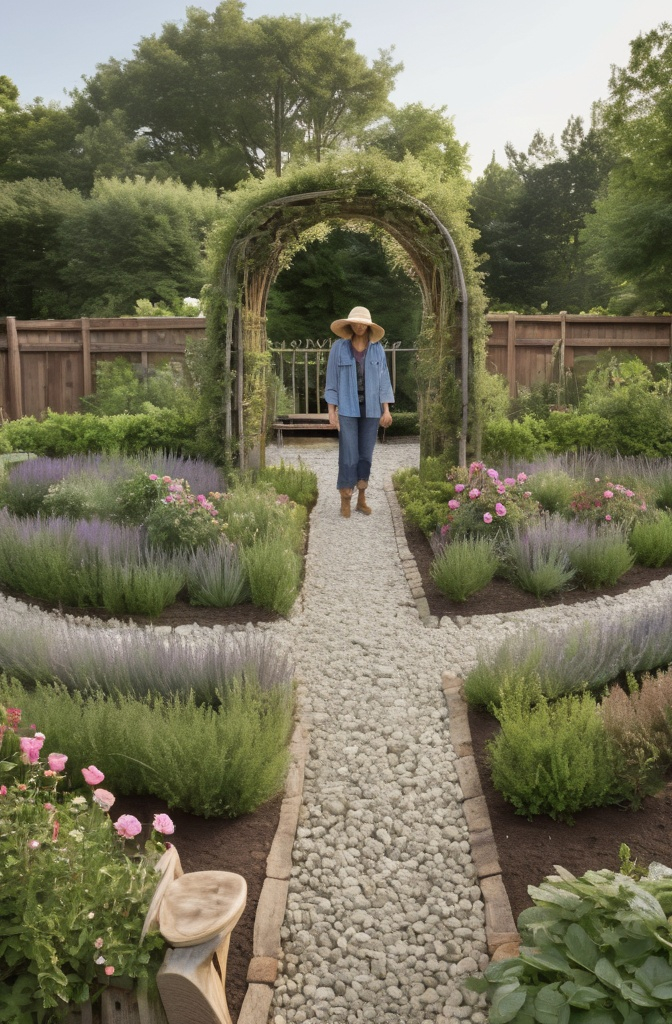
18. Repurposed Teacup Herb Garden
Give dainty teacups a new purpose by planting small herbs like thyme or chives in them. These charming containers fit easily on windowsills or shelves and offer a playful, upcycled look that blends function with whimsy.
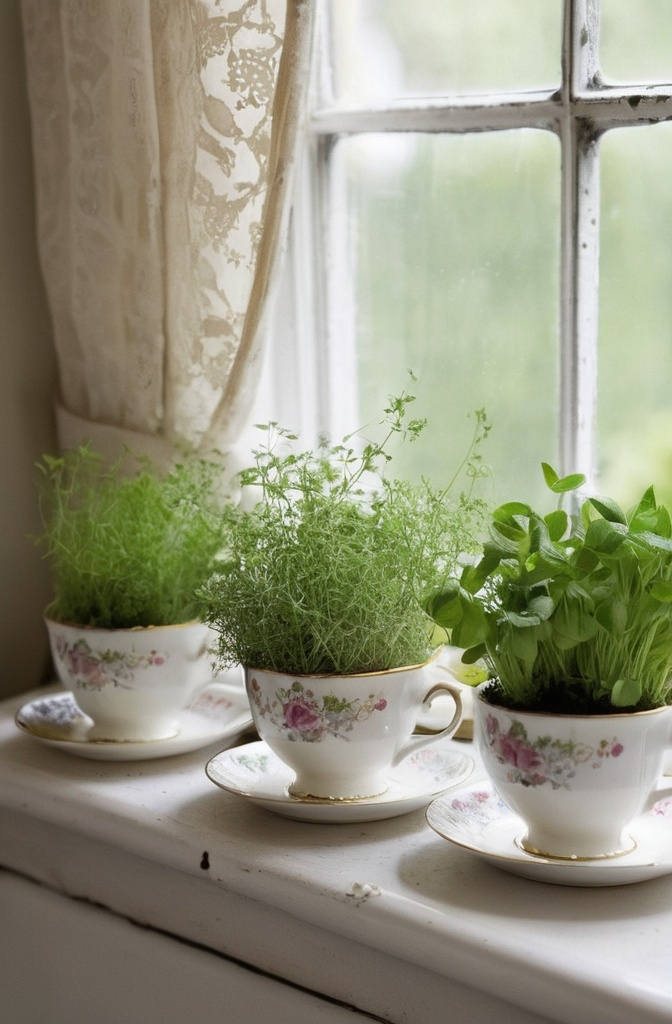
19. Herb Garden in an Old Bath Tub
Repurpose an old bathtub into a large-capacity herb garden. Its deep structure is perfect for planting larger herbs such as rosemary and lavender. The tub becomes both a gardening vessel and a bold decorative feature with a vintage or farmhouse twist.
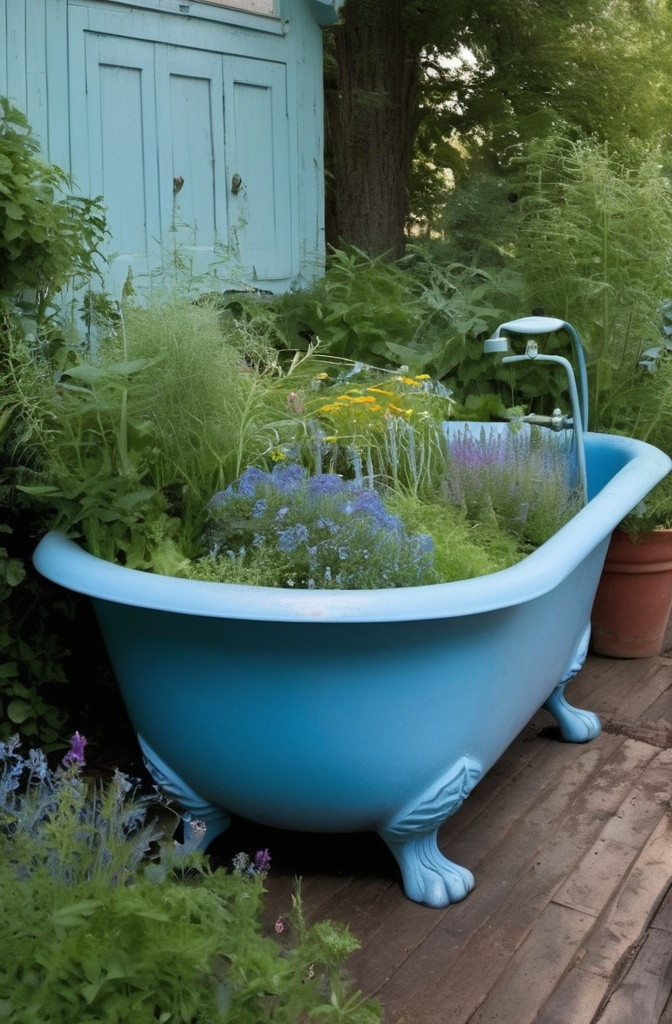
20. DIY Herb Garden in Old Wine Bottles
Instead of discarding empty wine bottles, use them to house individual herbs. Whether hung vertically or arranged neatly, these bottles become eye-catching planters. It’s a clever and sustainable way to merge style with utility in your indoor gardening efforts.
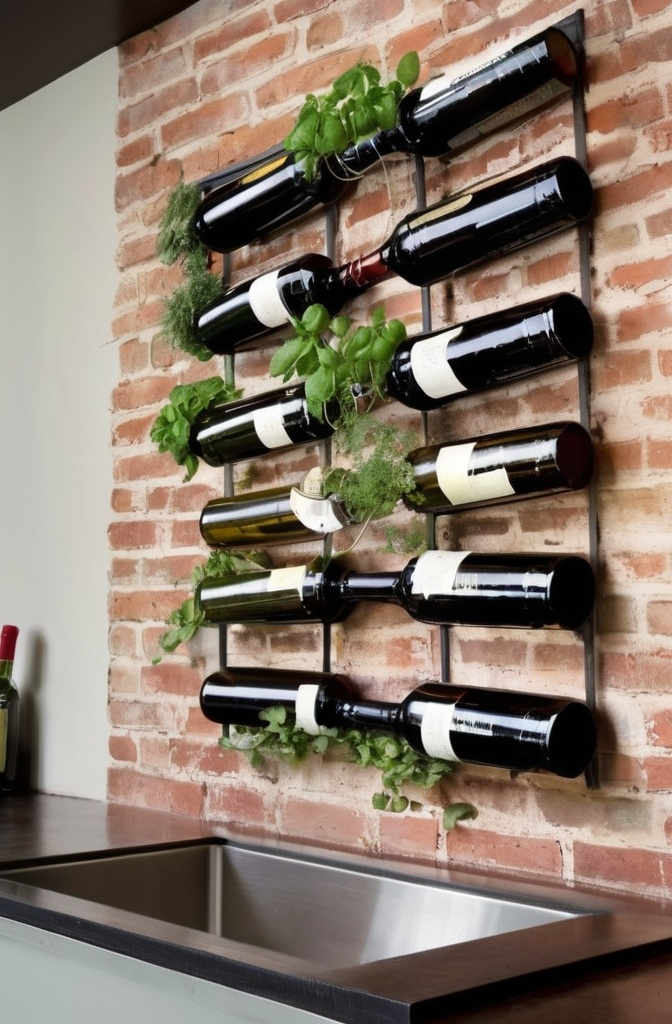
Conclusion
So, no matter how big or small your space is, there’s a way to bring fresh herbs into your home. These ideas will not only make your kitchen smell amazing but also help you make the most of your cooking. Fresh herbs are always better, and growing your own is the best way to make sure you’ve got them whenever you need them.
FAQs
What herbs are easiest to grow indoors?
Some of the easiest herbs to grow indoors include basil, parsley, cilantro, mint, and thyme. These herbs thrive in sunny spots and don’t require too much maintenance. Just make sure they get plenty of light and water them regularly.
Can I grow herbs on my windowsill?
Absolutely! A sunny windowsill is a perfect spot for growing herbs. Containers like small pots or mason jars work well. Just ensure the plants get enough sunlight, and you’ll have fresh herbs ready to use in no time.
How much sunlight do indoor herbs need?
Most herbs need at least 4-6 hours of direct sunlight per day. A sunny windowsill or a bright kitchen counter will provide the necessary light. If natural sunlight is limited, you can also use grow lights to supplement.
What are the benefits of growing herbs at home?
Growing herbs at home saves you money, reduces trips to the store, and ensures you have fresh, organic herbs whenever you need them. Plus, it adds a lovely green touch to your kitchen, improving the atmosphere and air quality.
How do I care for my herb garden indoors?
Keep your indoor herbs in a spot with plenty of sunlight, and water them regularly, but not too much. Make sure the pots have drainage holes to avoid root rot. Prune your herbs as they grow to encourage new growth and keep them healthy.
Can I grow herbs in small spaces?
Yes, definitely! Many of the herb garden ideas mentioned are perfect for small spaces. Hanging baskets, mason jars, and countertop planters are great ways to grow herbs even if you don’t have a lot of room.
What should I plant in a vertical herb garden?
In a vertical herb garden, you can plant a wide variety of herbs such as basil, thyme, oregano, mint, and chives. Herbs that don’t require a lot of root space work well in vertical setups, allowing you to maximize space.
Can I grow herbs without soil?
Yes! You can grow herbs without soil using hydroponic or aquaponic systems. These methods rely on water and nutrients rather than soil to grow healthy plants. It’s a more advanced option but very effective if you want to grow herbs in a small or space-limited area.
How do I keep pests away from my indoor herb garden?
To keep pests at bay, ensure your herbs have good airflow and don’t overwater them, as damp conditions can attract pests. If pests do appear, you can try natural remedies like neem oil or an insecticidal soap to keep them under control.
Are there any herbs that require more care than others?
Yes, some herbs need a bit more care. For example, basil requires warm temperatures and consistent watering, while rosemary prefers dry, well-drained soil and lots of sunlight. Always check the specific needs of each herb you’re growing to give it the best care.

Emma is a passionate home decor enthusiast and the voice behind Home Evoke. With a keen eye for design and a love for transforming spaces, she shares her expertise and creative ideas to help others create beautiful, functional homes. Through her blog, Emma inspires readers with practical tips, trend insights, and DIY projects that make home styling effortless and enjoyable.

